Welcome to an exploration of the expansive skies and the captivating world of the largest airline fleets. In this journey, we embark on a flight via the heart of the aviation enterprise, unraveling the significance, demanding situations, and future trends that shape these airborne giants.
The time period “Largest Airline Fleets” goes beyond mere quantity; it encapsulates the giant collections of aircraft that crisscross the globe, connecting humans and locations. As we delve into this evaluation, our aim is to demystify the intricacies surrounding those fleets, from their financial significance to the impact of technological advancements and their function in shaping the passenger experience.
Understanding the size of these fleets involves delving into the standards for size and thinking about factors beyond sheer numbers. Challenges faced with the aid of airlines with large fleets are various, ranging from operational complexities to the imperative of sustainability. We navigate through these demanding situations, exploring revolutionary answers that preserve those fleets soaring high.
The financial implications of running the largest airline fleets are profound, with a ripple impact that extends some distance beyond the aviation sector. Job creation, revenue technology, and their role as signs of world monetary traits are crucial aspects explored in our overview. The skies, it appears, are intricately woven into the economic material of our international.
Technological advancements are the engines propelling the growth of these fleets. From efficient operations to sustainable practices, technology shapes the landscape of the Largest Airline Fleets. As we look towards the future, we anticipate trends such as continued growth, evolving technological landscapes, and potential shifts in global fleet hierarchies.
In the realm of the Largest Airline Fleets, the passenger experience takes center stage. Fleet size influences options and choices, impacting the quality of service provided. We delve into case studies of airlines that excel in providing exceptional passenger experiences, showcasing how the scale of fleets contributes to the satisfaction of those on board.
As we conclude this overview, the dynamic and evolving nature of the Largest Airline Fleets becomes apparent. Beyond being carriers of passengers and cargo, these fleets are economic powerhouses, technological marvels, and creators of memorable travel experiences. The skies are not just vast; they are an ever-changing canvas, inviting us to navigate the marvels of the Largest Airline Fleets. So, fasten your seat belts, and let the exploration begin.
Table of Contents
Introduction

Defining the Sky Giants
Picture this: fleets of aircraft, numbering within the hundreds or even heaps, hovering over the enormous expanse of the environment. These are the largest airline fleets, behemoths in global aviation, that play a pivotal role in shaping the way we traverse the globe. When we talk over the biggest airline fleets, we are talking about the massive collections of planes that crisscross the skies day by day, connecting people, cultures, and continents.
- Magnitude Beyond Measure: These fleets are not just good-sized; they redefine the size of air travel, symbolizing the sheer might and capability of the airlines that operate them.
The Sky’s the Limit: Growth in Aviation
Now, let’s zoom out for a second and take a broader view of the skies above. The increase in the aviation industry has been nothing short of exceptional, with large fleets serving as the spine of this growth. From the common-or-garden beginnings of aviation to the cutting-edge, wherein fleets correspond to airborne towns, the adventure has been exhilarating.
- Evolution of Air Travel: The records of aviation mirror our insatiable desire to conquer the skies. What started with a handful of planes has transformed right into an international network of interconnected flights, and at the heart of all of it are the largest airline fleets.
Unveiling the Focus: “Largest Airline Fleet”
Now, you might be questioning, Why focus specifically on the term “largest airline fleet”? It’s more than just a buzzword—it encapsulates the essence of electricity, efficiency, and influence within the aviation industry. Think of it as the key that unlocks a treasure trove of insights into how airlines dominate the aggressive skies.
- Crucial Keyword Unveiled: In our journey via this blog post, “Largest Airline Fleet” could be our guiding celebrity, leading us via an elaborate web of factors that make these fleets no longer simply big but pivotal gamer within the complicated dance of global air travel.
Understanding the Scale of Largest airline fleet
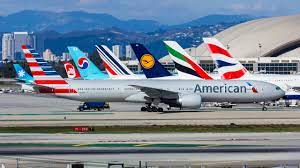
Defining Criteria: What Makes a Fleet the Largest?
What sets apart the huge gamer in the aviation sport? When we talk about the largest airline fleets, we’re not simply counting the number of planes parked on the tarmac. The size of a fleet contains a mixture of things, from the sheer number of planes to the range of models and their operational performance.
- Beyond the Count: It’s now not simply a numbers recreation; it’s approximately the strategic blend of planes, their abilities, and how successfully they are able to navigate the widespread skies. So, while we are saying “biggest,” we’re thinking about a blend of quantity, range, and effectiveness.
Key Indicators: Metrics that Soar Above the Rest
How do we measure the importance of those airborne armadas? Enter the important signs and metrics that give us a wide-ranging view of a fleet’s prowess. From the variety of daily flights to the passenger capability and even the gas performance of the aircraft, these metrics paint a vivid picture of why some fleets stand head and shoulders above the relaxation.
- Flight Frequency: The frequency of flights isn’t always pretty much keeping busy; it’s a testament to a fleet’s potential to fulfill the needs of a bustling worldwide travel landscape. More flights suggest greater connectivity, and that is an extensive metric within the world of the largest Fleets
Comparison: How Big is Big?
To truly grasp the scale, let’s take a moment to compare. Picture a fleet with a modest number of aircraft, diligently serving specific routes. Now, juxtapose that with the sprawling network of the Largest Airline Fleets. It’s not about belittling the smaller players; it’s about showcasing the vast difference in scale and reach.
- Beyond Size: Impact on Connectivity: It’s not about downplaying the achievements of smaller fleets; it’s about appreciating the monumental impact that the largest fleets have on global connectivity. The scale of operations translates into a more extensive web of destinations, connecting people and places like never before.
Global Leaders in Fleet Size
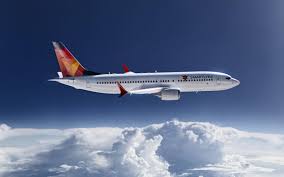
Examining Worldwide Giants
Presenting Statistical Data and Rankings
Gather ’round fellow sky enthusiasts, as we dive into the hard facts and figures of the aviation realm. The global stage is set with airlines jostling for the title of having the Largest Airline Fleets. Through comprehensive statistical data and rankings, we get an eagle-eye view of the leaders, the contenders, and the sheer magnitude they command.
- By the Numbers: Whether it’s counting the number of aircraft or assessing the overall passenger capacity, the statistical data reveals the colossal scale of these fleets. Rankings showcase the pecking order, letting us see who’s soaring highest in the race.
Brief Profiles of Top Airlines
Now, permit’s placed faces to the names and get acquainted with the heavyweights of the skies. The top airlines with the largest airline fleets are not just numbers on paper; they are aviation legends. From the stalwarts who’ve held the identity for decades to the newcomers disrupting the airspace, everyone has a unique story to tell.
- Icons of the Sky: These airlines aren’t simply fleet owners; they are pioneers, visionaries, and the architects of world connectivity. Brief profiles give us a glimpse into their fleet compositions, operational techniques, and the indelible mark they have got left at the aviation tapestry
Regional Variations in Fleet Dominance
Focusing on Major Players in Different Continents
Now, let’s zoom into the geographical patchwork of global aviation. The dominance of Largest Airline Fleets isn’t a uniform spectacle; it’s a dynamic play with regional stars shining in their own right. From the bustling hubs of North America to the strategic crossroads of Asia, each continent has its own set of major players.
- Continental Champions: By highlighting the major fleet owners in each continent, we unravel the diversity in global aviation leadership. It’s not just about size; it’s about the unique challenges and opportunities each region presents.
Factors Influencing Regional Fleet Distribution
What shapes the landscape of fleet dominance in each vicinity? It’s not pretty much the range of runways; it is a sensitive interaction of monetary forces, geopolitical elements, and the ever-evolving needs of the nearby population. By knowing those elements, we gain insights into why certain airlines emerge as the flag bearers of the biggest airline fleets in their respective areas.
- Beyond Size: Unraveling the Whys The local variations are not arbitrary; they’re a charming tapestry woven by using factors like economic prosperity, population density, and strategic positioning. Each neighborhood’s story provides intensity to our information about the worldwide aviation landscape.
As we navigate through the global leaders and nearby nuances of the biggest airline fleets, we are no longer simply witnessing the size of operations; we’re unraveling the intricate geopolitical and financial threads that bind the skies together.
Technological Advancements in Largest Airline Fleet
Impactful Tech: Catalyst for Fleet Expansion
Technology isn’t always simply converting the game; it is rewriting the rule book for the largest airline fleets. The impact is palpable, from progressive aircraft designs to stronger operational performance. Technological strides are not simply luxurious; they are the engines riding the growth and evolution of fleets on a worldwide scale.
- Efficiency in Flight: Technological advancements usher in a technology of heightened performance, optimizing routes, gasoline consumption, and upkeep schedules. It’s not just about speed; it’s about smart, resourceful, and sustainable air travel.
Modern Marvels: Redefining Fleet Dynamics
Picture sleek, state-of-the-art aircraft gracing the tarmac—a visual testament to the role of modern planes in the tapestry of the Largest Airline Fleets. These marvels aren’t just about aesthetics; they redefine capacity, comfort, and connectivity, creating a fleet synergy that elevates the travel experience.
- Diverse Fleet Portfolio: Modern aircraft aren’t one-size-fits-all. The largest fleets boast a diverse portfolio, blending various models to cater to different routes and passenger needs. It’s this diversity that adds a dynamic edge to the vastness of these airborne fleets.
Eco-Friendly Skies: Sustainability Takes Flight
The future isn’t pretty large and quicker; it’s far approximately greener skies. Sustainable aviation practices have become fundamental to the narrative of the largest airline fleets. From bio fuels to inexperienced designs, the employer is taking ambitious strides to limit its environmental footprint.
- Green Initiatives: Sustainability isn’t always a buzzword; it’s a dedication. Large fleets are increasingly adopting green practices, investing in bio fuel studies, and embracing green technology. It’s a collective effort to make sure that the marvels of the sky no longer compromise the wonders of our planet.
As we jump through the advancements that form the identification of the Largest Airline Fleets, keep in mind that it’s not quite a lot about the era; it’s about the transformative journey that ensures the ones fleets no longer surely navigate the skies—they accomplish that responsibly, efficiently, and with an eager eye on the future.
Economic Implications for the Largest airline fleet
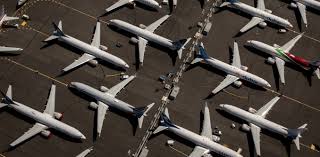
Flying High: Economic Significance Unveiled
The economic significance of operating the Largest Airline Fleets is akin to orchestrating a symphony of financial contributions. It’s not merely about planes in the sky; it’s about the dynamic role these fleets play in stimulating economies on a global scale.
- Hub of Economic Activity: Large fleets are more than just airborne vehicles; they are hubs of economic activity. From fueling demand for aerospace technology to boosting tourism, the economic ripple effect extends well beyond the airline industry.
Employment Soars: Job Creation and Revenue Generation
Think about the multitude of roles that come together to keep the fleets soaring. The operation of the largest airline fleets is a veritable process-adventure engine, spanning pilots, floor crews, upkeep employees, and a myriad of other roles. It’s not just about planes; it’s about livelihoods taking flight.
- Job Creation: The effect isn’t simply felt at 30,000 feet; it trickles all the way down to the floor, creating jobs in a multitude of sectors. From aviation experts to help staff, the operation of big fleets is a catalyst for employment opportunities.
- Revenue Streams: Beyond the hum of engines, the monetary hum of revenue technology is ever-present. The sheer scale of those fleets translates into giant sales streams, not only for the airlines themselves but for the myriad agencies interconnected with the aviation environment.
Skyline Economics: Fleet Size and Global Trends
Ever wondered about the correlation between the size of Largest Airline Fleets and global economic trends? The connection is more than coincidental. The ebb and flow of fleet sizes reflect, and in some cases, anticipate economic shifts on a worldwide scale.
- Indicator of Economic Health: The size and health of airline fleets serve as barometers for economic vitality. Expanding fleets often signal economic growth, while contractions may indicate economic challenges. It’s a fascinating interplay between the skies and the global economic landscape.
As we navigate through the economic implications of the Largest Airline Fleets, remember, it’s not just about planes crisscrossing the globe—it’s about the economic symphony they conduct, shaping industries, creating livelihoods, and leaving an indelible mark on the world’s economic canvas.
Challenges and Solutions
Navigating Headwinds: Addressing Common Challenges
Operating the Largest Airline Fleets isn’t all smooth skies; there are storms to weather. From logistical complexities to maintenance demands, airlines with expansive fleets face challenges that require strategic navigation.
- Logistical Complexities: Coordinating a vast fleet involves intricate logistics. Ensuring timely departures, managing crew schedules, and optimizing routes are like orchestrating a symphony of moving parts.
- Maintenance Demands: With size comes responsibility—maintaining a large fleet demands meticulous attention. Balancing regular maintenance while keeping planes in the air requires finesse.
Cleared for Takeoff: Innovative Solutions and Strategies
In the face of demanding situations, the captains of the largest airline fleets set up creative solutions. Innovation takes flight, addressing operational obstacles with techniques that keep the fleet wheels turning.
- Advanced Fleet Management Systems: Cutting-edge technology performs a pivotal role. Airlines leverage state-of-the-art fleet control structures to streamline operations, optimize schedules, and enhance typical efficiency.
- Predictive Maintenance Techniques: Embracing predictive maintenance minimizes downtime. By leveraging record analytics, airlines can anticipate potential troubles, make an allowance for proactive protection, and lower unplanned disruptions.
Sky’s the Limit: Sustainability Challenges and Industry Response
The length of Largest Airline Fleets brings with it environmental duties. Sustainability challenges loom large, prompting the aviation industry to respond with forward-questioning initiatives.
- Fuel Efficiency Innovations: Addressing concerns about carbon footprints, the industry invests in gas-efficient aircraft and explores opportunity fuels, lowering environmental impact.
- Eco-Friendly Practices: Beyond the era, airlines undertake Eco-friendly practices, from waste discount applications to sustainable sourcing. It’s a collective effort to make certain the marvels of the sky coexist harmoniously with the wonders of the earth.
As we navigate through the demanding situations and solutions of running the Largest Airline Fleets, consider, every hurdle met with innovation propels the enterprise ahead. It’s now not pretty much overcoming challenges; it is approximately evolving, adapting, and ensuring that the skies remain a marvel for generations to come.
The Passenger Experience
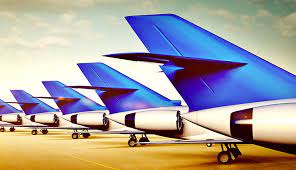
Infinite Choices: Impact of Fleet Size on Passenger Options
Imagine a world in which the sky’s the restriction for passengers. The size of the largest airline fleets is not just about the amount; it’s about the plethora of options available to tourists. From various routes to a big selection of planes, larger fleets open up a universe of picks for passengers, making air travel a journey in itself.
- Destination Diversity: Larger fleets suggest extra destinations. Passengers have the luxury of choosing not only where to go but also how they need to get there. It’s a kaleidoscope of possibilities in the air travel palette.
- Varied Aircraft Models: The huge variety of planes in large fleets caters to one-of-a kind preferences. Whether you are a fan of huge-body comfort or the nimbleness of slender-body planes, the alternatives are as numerous as the skies are expansive.
Scale and Service: Quality in the Clouds
Now, you might wonder, does the scale of an airline’s fleet correlate with the quality of service? Absolutely. The size of Largest Airline Fleets often translates into a commitment to passenger satisfaction. It’s not just about the number of planes; it’s about ensuring that each passenger, regardless of the size of the crowd, receives top-notch service.
- Personalized Service: Larger fleets don’t equate to impersonal experiences. On the contrary, the scale allows airlines to invest in personalized services, from in-flight entertainment options to varied dining choices. It’s a commitment to making each passenger feel like a VIP in the expansive skies.
- Efficiency in Operations: The operational efficiency required to manage a large fleet often translates into smoother experiences for passengers. Timely departures, organized boarding processes, and efficient baggage handling contribute to an overall positive journey.
Exceptional Experiences: Case Studies in Passenger Delight
Let’s delve into the actual-life testimonies of airlines that have mastered the art of imparting outstanding passenger experiences inside their largest airline fleets. These aren’t just testimonies; they may be blueprints for creating memorable moments at 30,000 feet.
- Emirates: A Pinnacle of Luxury With one of the most important fleets globally, Emirates is renowned for its dedication to luxury travel. From spacious cabins to contemporary enjoyment, Emirates sets the bar high for indulgent passengers to revel in.
- Delta Air Lines: Pioneering Innovation: Operating one of the largest fleets in the world, Delta stands proud of its innovation. Whether it’s introducing contemporary planes or enhancing in-flight offerings, Delta guarantees that passengers experience the heartbeat of development.
As we navigate via the world of the passenger and enjoy inside the global network of the largest airline fleets, recall, it’s now not just about accomplishing your vacation spot—it’s approximately savoring the journey, and the scale of the fleet plays a pivotal role in shaping that experience.
Future Trends for largest airline fleets
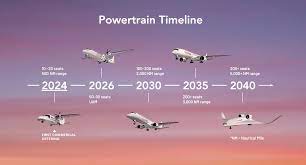
Skyward Bound: Predicting Future Growth
The future holds expansive possibilities for the growth of Largest Airline Fleets, and it’s not just about more planes in the sky. The trajectory hints at a continuous ascent, with fleets expanding to meet the evolving demands of global travel. Anticipate a sky dotted with even more giants, connecting diverse corners of the world.
- Global Connectivity: Future growth isn’t just about bigger fleets; it’s about connecting more dots on the global map. Expect new routes, increased frequency, and enhanced connectivity as the largest fleets respond to the ever-growing wanderlust of passengers.
- Fleet Diversity: The future may witness a surge in the diversity of aircraft within the largest fleets. Airlines are likely to invest in state-of-the-art models, each designed to cater to specific routes and passenger preferences, making the sky a canvas of technological marvels.
Technological Marvels: Shaping the Future Landscape
As we navigate through the destiny of the largest airline fleets, technology takes center stage, weaving a tapestry of innovation that guarantees greater performance, sustainability, and passenger reviews. The skies are set to become a playground for modern improvements.
- Smart Operations: Expect smarter, more efficient operations with the mixing of synthetic intelligence and information analytics. From predictive preservation to optimized route planning, technology could be the unseen hand guiding the biggest fleets via the skies.
- Sustainability Takes Flight: Green aviation could be more than just a fashion; it will be a need. Look for the largest fleets to undertake sustainable practices, from investing in green planes to exploring opportunity fuels. The future sky promises to be cleaner and greener.
Shifting Skies: Potential Changes in Global Fleet Hierarchy
In the ever-evolving panorama of aviation, the hierarchy of worldwide fleet leaders might go through shifts. New players may additionally emerge, armed with revolutionary techniques, while established giants may want to adapt to keep their positions. Keep a watch on the horizon for potential adjustments in the form of characters ruling the skies.
- Emerging Players: The future may additionally witness the upward push of airlines from rising markets, expanding their fleets to compete on a global scale. The dynamics of the most important fleets may want to see new entrants reshape the aviation narrative.
- Adaptability wins: The potential to conform to changing needs and include technological shifts could be key. Established leaders and rookies alike will need to exhibit nimbleness in their strategies to stay at the forefront of the race.
As we peer into the future of the largest airline fleets, the skies seem boundless with possibilities. From expansive growth to technological marvels and capability shifts in the hierarchy, destiny promises an interesting journey for those navigating the marvels of the airborne giants.
Conclusion
Recap of the Skyward Journey
As we wrap up our exhilarating adventure through the clouds, let’s take a moment to reflect on the huge importance of the largest airline fleets in the full-size tapestry of the aviation industry. It’s no longer just about the sheer variety of planes; it’s about the significant impact these fleets have on worldwide connectivity, financial energy, and the very essence of modern air travel.
- Connectivity Beyond Borders: The importance of the largest airline fleets lies in their potential to bridge continents, join cultures, and make the sector feel more accessible than ever before. They are the arteries of the global journey, pumping life into the veins of worldwide connections.
Summary of High-Flying Insights
As we’ve soared through the various dimensions of the aviation landscape, we’ve uncovered the intricate threads that weave together the narrative of the Largest Airline Fleets. From the economic powerhouses they represent to the technological marvels propelling them forward, each facet contributes to the dynamic story of these airborne giants.
- Economic Engines: The fleets aren’t just carriers of passengers and cargo; they’re economic engines, generating employment, revenue, and influencing global economic trends.
- Technological Prowess: Technological advancements are not mere luxuries but essential components shaping the evolution of Largest Airline Fleets. From efficient operations to sustainable practices, technology is the wind beneath their wings.
- Passenger-Centrist Experiences: In the passenger realm, the size of these fleets isn’t just a number; it’s an assurance of diverse options, top-notch service, and exceptional experiences at 30,000 feet.
- Future Flight Paths: Looking ahead, the future of the Largest Airline Fleets holds exciting prospects. Anticipated growth, further technological breakthroughs, and potential shifts in leadership hierarchies are on the horizon, promising a thrilling continuation of their skyward journey.
Closing Thoughts on the Evolving Skies
As we land on this exploration, it is important to recognize that the arena of the largest airline fleets is not static; it is a dynamic and ever-evolving canvas. The skies aren’t just sizable; they’re a playground for innovation, sustainability, and the relentless pursuit of improving what passengers revel in.
- Continuous Evolution: The world’s largest airline fleets aren’t destinations; they’re way points in a non-stop adventure of evolution. The skies are ever-converting, and those fleets, with their adaptability and resilience, preserve and shape the path of aviation records.
- Invitation to the Skies: So, whether you are a seasoned aviation fanatic or a casual observer, the story of the Largest Airline Fleets is an invitation to the skies. It’s a story that unfolds with every takeoff, promising new chapters of connectivity, technological marvels, and the wonders of global exploration.
As our adventure concludes, let’s marvel at the skyward wonders and boundless capability that the largest airline fleets bring to our world. Until the following flight of discovery, maintain your eyes on the horizon, for the skies are significant and the marvels they keep are infinite. Safe travels!
Frequently Asked Questions (FAQs)

Q1. What exactly do you mean by “Largest Airline Fleets”?
“Largest Airline Fleets” refers to the extensive collections of aircraft owned and operated by airlines. It’s not just about the number of planes but also includes factors like the diversity of aircraft models, operational efficiency, and the global reach of an airline’s fleet.
Q2. How is fleet size measured in the aviation industry?
Fleet size is commonly measured by the total number of aircraft in an airline’s possession. However, it’s essential to consider other factors such as the type of aircraft, passenger capacity, and operational efficiency for a comprehensive understanding of fleet size.
Q3. Which airlines currently have the largest fleets in the world?
As of the latest information, airlines such as American Airlines, Delta Air Lines, and Southwest Airlines are among those with some of the largest fleets globally. However, rankings can change, so it’s advisable to refer to recent industry reports for the most up-to-date information.
Q4. How do technological advancements impact the expansion of the largest airline fleets?
Technological advancements play a crucial role in the growth of the largest airline fleets. Innovations in aircraft design, fuel efficiency, and operational technologies contribute to the expansion and modernization of fleets, ensuring airlines stay competitive in the ever-evolving aviation landscape.
Q5. How do large airline fleets contribute to the global economy?
Large airline fleets have a significant impact on the global economy. They generate employment opportunities, contribute to revenue generation, and stimulate economic activity by fostering tourism and trade. The interconnected nature of the aviation industry means that the economic implications of large fleets extend beyond the airline sector itself.
Facebook: https://www.facebook.com/profile.php?id=61556242913524
Instagram: https://www.instagram.com/contentflyers0/
Twitter: https://www.twitter.com/contentflyers0/
Pinterest: https://www.pinterest.com/contentflyers0/
Reddit: https://www.reddit.com/user/contentflyers0
Medium: https://medium.com/@contentflyers0/
